March 14, 2022-April 30, 2022
Grounds & Elmaleh Gallery, School of Architecture, University of Virginia
After Architecture, curator
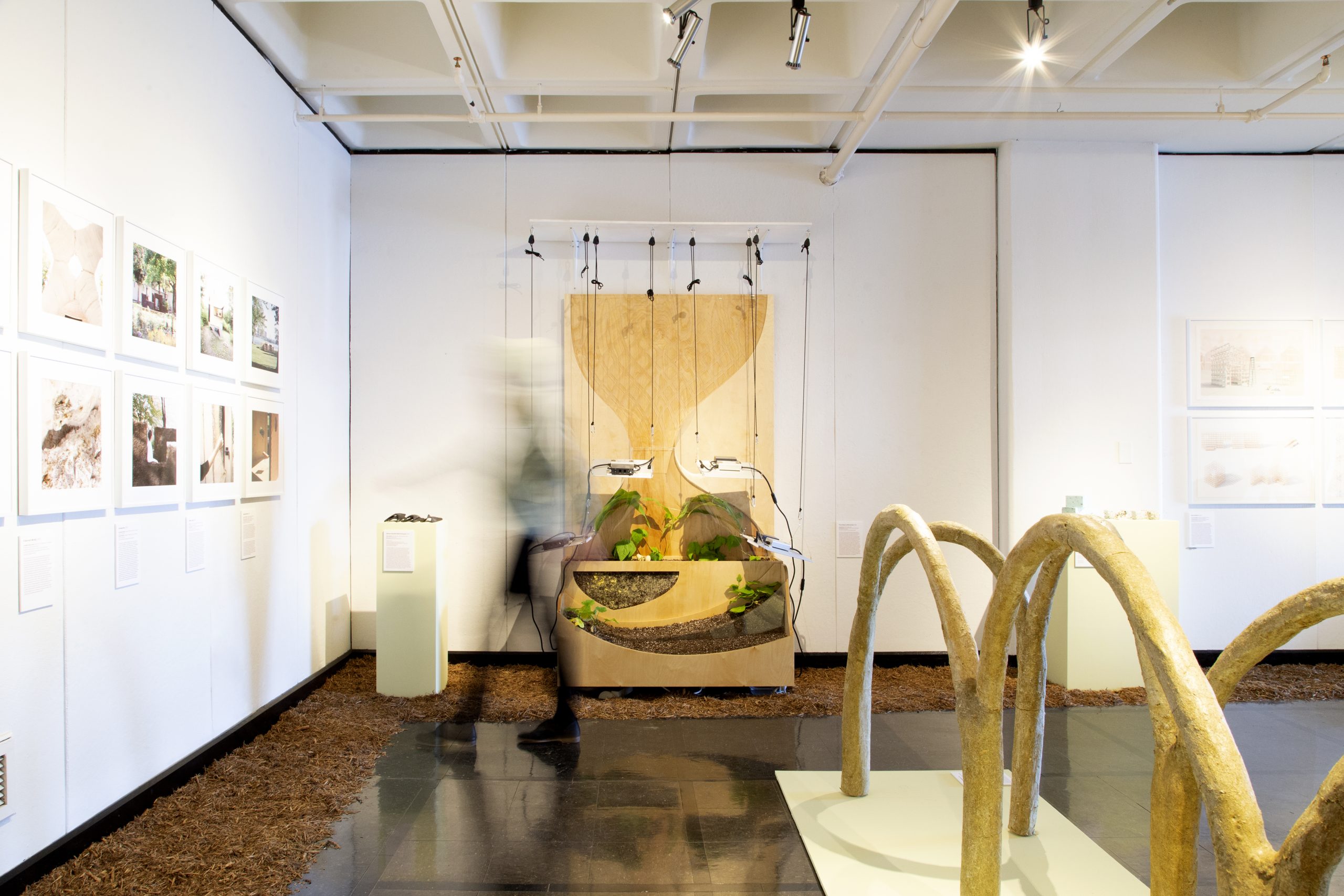
The Biomaterial Building Exposition challenges the understanding of the (human) architect as the maker of (all) things by asking us to coordinate our survival together with other earthlings.
After Architecture, the design and research studio led by Katie MacDonald and Kyle Schumann, both assistant professors at the UVA School of Architecture, curated the exposition. Their statement argues for new construction models that confront environmental degradation. The work shown questions the architect’s agency when designing for an ailing planet, creating a dialogue among contemporary construction approaches to combat the wasteful building practices that have exacerbated the current ecological crisis. Each architect extended the authorship of the project toward different nonhuman agents, welcoming biological matter, technological tools, and other temporal processes into the design: water accumulation, organic growth, seasonal change, and machine-interaction. Each installation was unfinished when the exhibition opened, as action by biological agents was expected to continue the work of the pavilions’ human cocreators.
To understand these issues, I suggest the concept of becoming with, explained by Donna Haraway in When Species Meet (2008). Haraway outlines a process of encountering and connecting with more-than-human agents that allows for a new form of world-making exceeding human exceptionalism. Becoming with biological and geological entities destabilizes the image of the human in favor of a fluctuating web of cross-species actors engaged in reciprocal exchanges. Ultimately, the Biomaterial Building Exposition raises the crucial question: how many world-making architects might we begin to recognize and welcome as we continue to think of more-than-human agents, processes, and constituencies out here?
The exposition took place at the University of Virginia (UVA) in Charlottesville, Virginia between March and April 2022. During this time, five research pavilions decomposed, grew, weathered, and remediated ecosystems. In the style of world expositions and fairs—albeit at a different scale and in the context of the UVA “Grounds” (the Jeffersonian term for the campus)—the five pavilions were within a ten-minute walking distance from one another.
Three of the five exhibitors worked alongside trees to produce new architectures. The Houston-based practice, Office e.g., led by Liz Gálvez (Rice University), devised a methodology for returning reclaimed lumber to the forest, a reversal of wood extraction practices that increases soil health over time. A framework of CNC-milled logs within and around trees precludes any sort of interiority and instead forms a continuous relationship with environments and atmospheres. The pavilion is only complete as time passes, while soil remediation—and planned structural collapse—kicks in by weathering the logs. This reaction to the damaging byproducts of the construction industry sheds light on the need for architects to rethink material cycles through entropy.
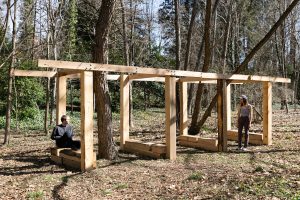
Figure 1. Office e.g. From Wood to Tree. Photograph by Tom Daly.
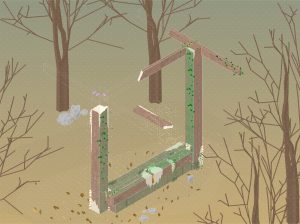
Figure 2. Office e.g. From Wood to Tree. Drawing by Office e.g.
Somewhere Studio, led by Jessica Colangelo and Charles Sharpless (both from the University of Arkansas), attempted a different take on working with trees, proposing a structure made of suboptimal species and grades of wood collected from a construction site in Dallas, Texas. Through cutting, half-lapping, and CNC milling, over 500 mixed pieces of lumber were stitched together by 1,000 carriage bolts producing a sturdy enclosure that capitalized on construction waste by making it useful.
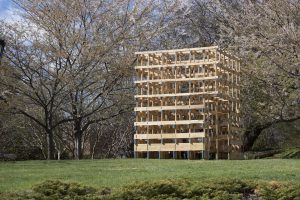
Figure 3. Somewhere Studio. Mix and Match. Photograph by David Alf.
Alternatively, the Ithaca-based practice HANNAH, led by Leslie Lok and Sasa Zivkovic (both from Cornell University), used six emerald-ash-borer-infested waste logs with unique profiles to create a curved hut with seating. By engaging in 3D scanning techniques complemented by robotic slicing, the decaying hardwood was stretched to its limit, using a zigzagging method of cutting that helps create braced structural assemblies that rethink standard wood framing techniques. This zero-waste construction method could be applied to lightweight structures in novel formal arrangements. In all three projects, the extreme porosity and alignment with vegetal form suggests a new understanding of architecture’s relationship to living species and environments.

Figure 4. HANNAH Office. Unlog. Photograph by HANNAH Office.
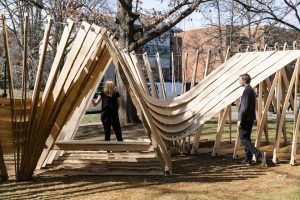
Figure 5. HANNAH Office. Unlog. Photograph by Tom Daly.
The remaining two exhibitors collaborated with fungi as their avenue for exploration. The research lab ForMat Lab—director Benay Gürsoy, PhD (Penn State University) and PhD candidate Ali Ghazvinian (Penn State University)—collaborated with Arman Khalilbeigi and Esmaeil Mottaghi from Paragen Creative Studio, and engaged in a form-finding method for compression-based structures made with mycelium composites. Their process involved a series of material cultivation techniques, tests, and form-finding exercises that enabled mycelium composites to grow within sixty-four unique components, all tied together through fungal growth.
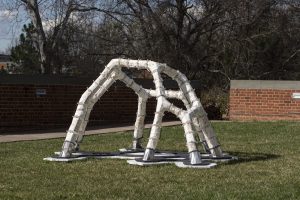
Figure 6. Benay Gürsoy, Ali Ghazvinian, Arman Khalilbeigi, and Esmaeil Mottaghi. MycoCreate 2.0. Photograph by David Alf.
Similarly, Myco Matters Lab and JDO Vaults, led by Jonathan Dessi-Olive (Kansas State University), produced a living structure that questioned the efficiency of material assemblies through a serpentine wall made of organic modular systems. Different chunks of mycelium composites were held together with dowels and placed into the ground, creating an oscillating structure that welcomed human and fungal users.
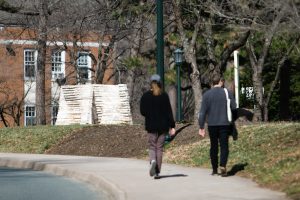
Figure 7. Jonathan Dessi-Olive. La Parete Fungina. Photograph by Tom Daly.
For both of the fungal projects, the uncertainty of working with living materials required coping with unexpected contaminations that took place during different parts of the design process. As mycelium grows, other living organisms, typically mold, can compete with it and prevent it from growing as expected. Such an apparent failure in the process could pose some of the most interesting challenges and questions about architectural authorship. Perhaps now we might be able to ask what a material really wants to be and receive a more honest answer than Louis Kahn’s notorious Brick becoming Arch. In some instances, decomposing and regenerative matter might be all that it wants to be. As Anna Löwenhaupt Tsing explains in The Mushroom at the End of the World (2015), mushrooms remind us of our dependence on more-than-human natural processes where “we can’t fix anything, even what we have broken, by ourselves.”[1]
Besides the exposition, MacDonald and Schumann invited the exhibiting design practices to share their thinking behind each project in a day-long symposium tracing opportunities and theoretical trajectories for architecture amidst the climate crisis. Moreover, an exhibition at the UVA School of Architecture Elmaleh Gallery helped contextualize the exposition through an array of models and drawings by the installation designers and additional scholars, including other architecture faculty and three professors of biomedical engineering at UVA. Suggesting that change is often unexpected and even uncomfortable, MacDonald and Schumann covered parts of the gallery floor with mulch, contrasting highly technological models with the pungent smell of ‘nature.’ These visceral juxtapositions between normative construction practices and biomaterial building matter—evident at the gallery, but most innate in the installations and their surrounding Jeffersonian structures—become living proof of architecture’s new possibilities through synthetic thinking and climate action. Perhaps future building expositions will also dare to deconstruct buildings and demonstrate that architecture was never static, fixed, or impervious to the world it grounds itself in.
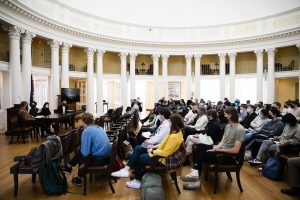
Figure 8.Biomaterial Building Exposition: Symposium. Photograph by Tom Daly.
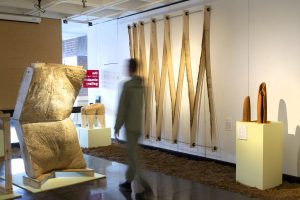
Figure 9.Biomaterial Building Exposition: Gallery. Photograph by After Architecture.
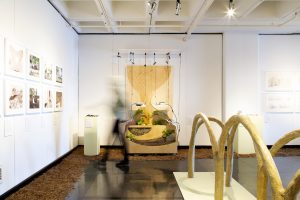
Figure 10.Biomaterial Building Exposition: Gallery. Photograph by After Architecture.
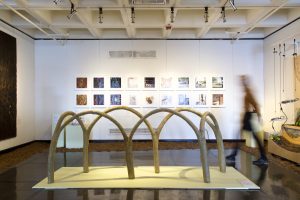
Figure 11.Biomaterial Building Exposition: Gallery. Photograph by After Architecture.
The Biomaterial Building Exposition is a timely reminder that a collaborative survival demands cross-species coordinations. In humanity’s case, this involves a deterritorialization of the human in favor of the dynamic and fluctuating forces of nature.
José Ibarra is an architectural designer, researcher, and educator whose interdisciplinary work focuses on the intersection between architecture and environmental uncertainty. He is an assistant professor in the College of Architecture and Planning at the University of Colorado Denver. Recently, he coedited the book Werewolf: The Architecture of Lunacy, Shapeshifting, and Material Metamorphosis (AR+D, 2022) and won the 2022 ACSA/AIA New Faculty Teaching Award. Ibarra is currently advancing design work and research dealing with architectural processes, time, and geoempathy.
How to Cite This: Ibarra, José. Review of Biomaterial Building Exposition, curated and designed by Grounds and Elmaleh Gallery, University of Virginia, School of Architecture, Charlottesville, VA, March – April 2022, JAE Online, July 29, 2022.
Anna Löwenhaupt Tsing, The Mushroom at the End of the World: On the Possibility of Life in Capitalist Ruins (Princeton: Princeton University Press, 2015), 257.






